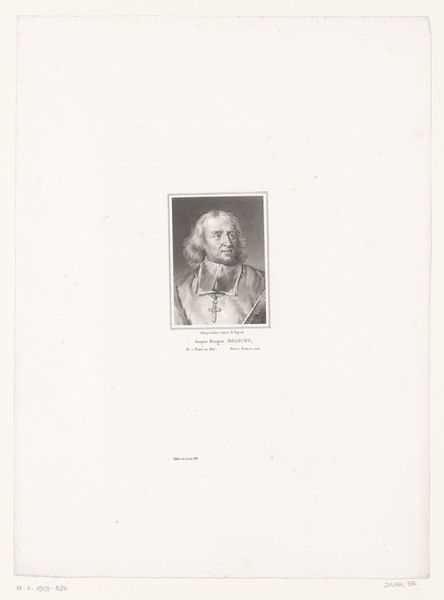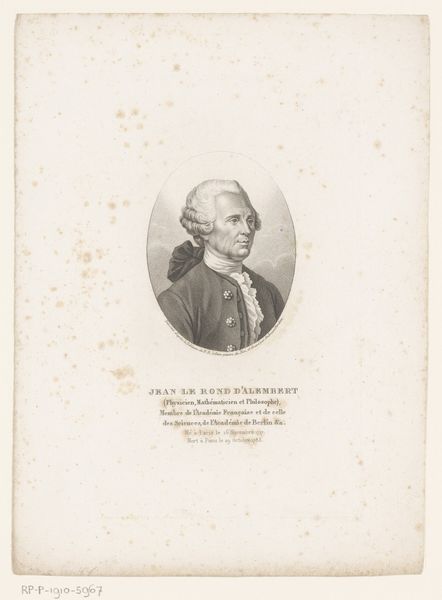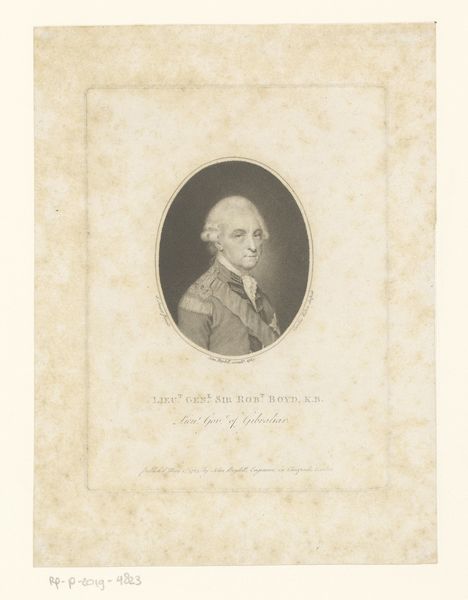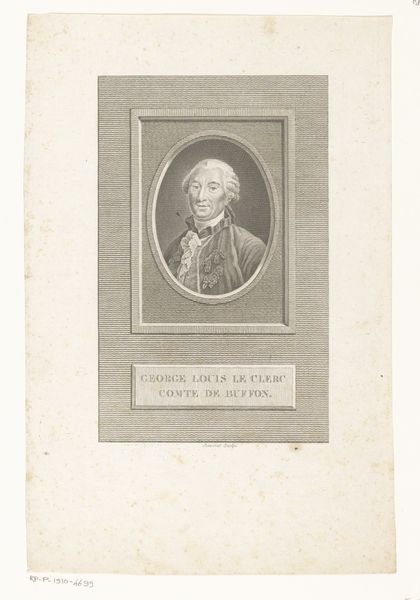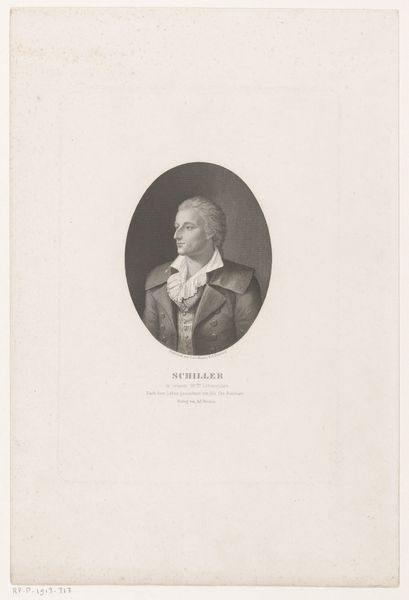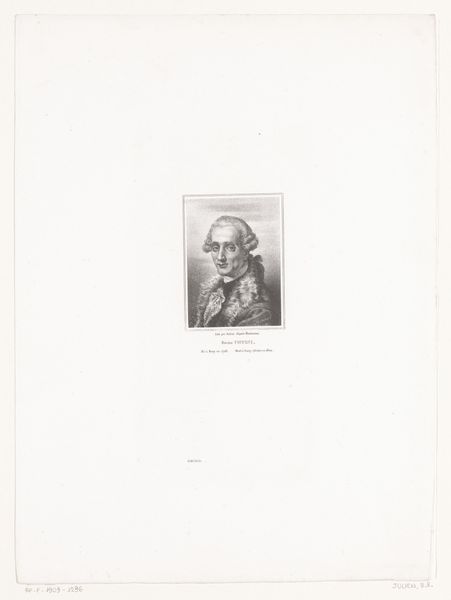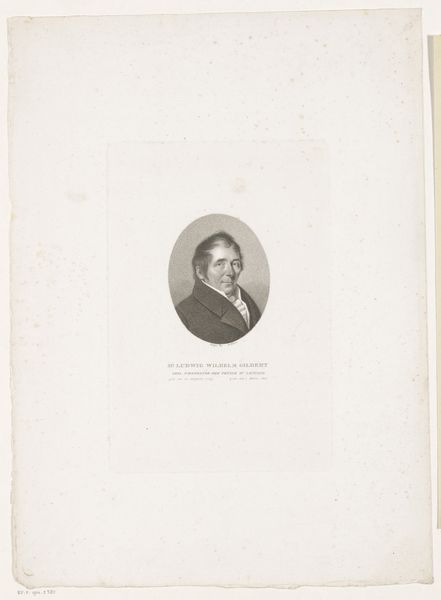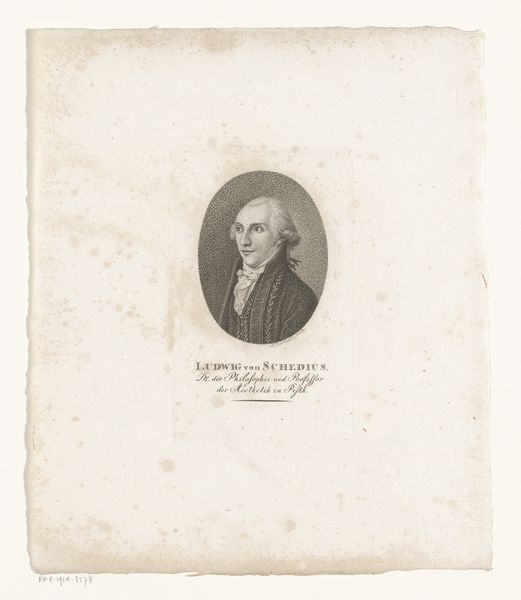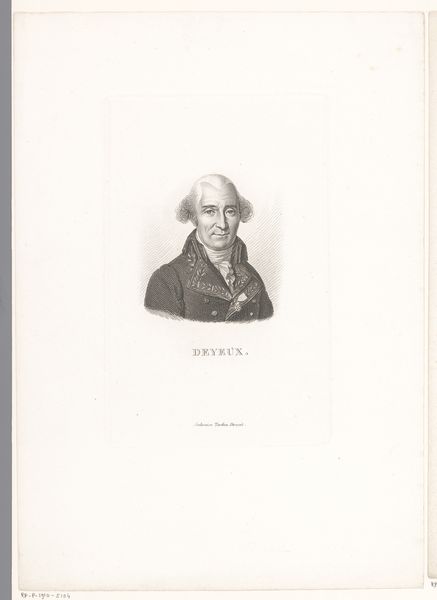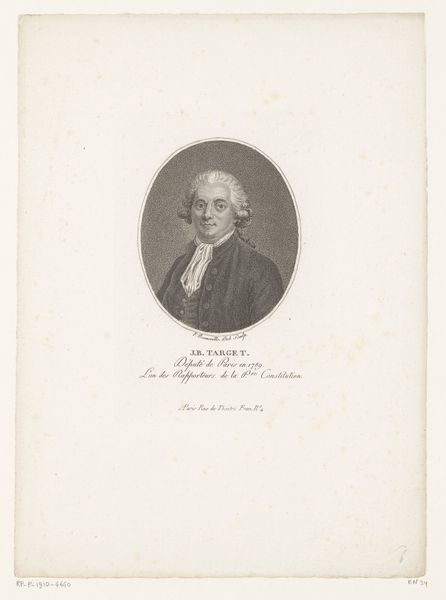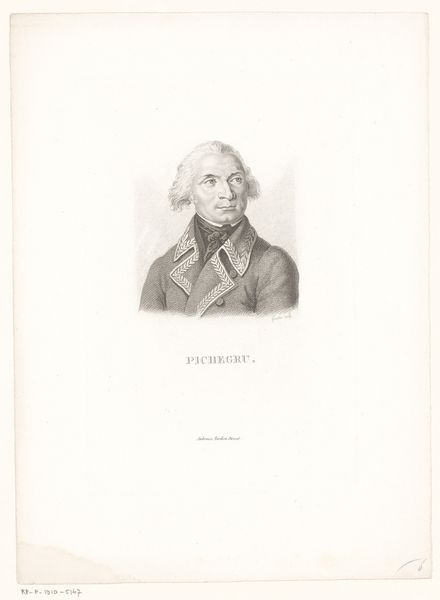
print, engraving
#
portrait
#
pencil drawn
#
neoclacissism
#
light pencil work
# print
#
old engraving style
#
white palette
#
ink colored
#
pencil work
#
engraving
Dimensions: height 220 mm, width 139 mm
Copyright: Rijks Museum: Open Domain
Curator: Good morning. Here we have an engraving dating from approximately 1818, "Portret van Jean Rivaud" by Charles Aimé Forestier. Editor: Oh, there’s a stern face! Makes you wonder what that gaze has witnessed. But those delicately engraved details—lace, braiding, oh, so exquisite. There’s a strange melancholic beauty to it. Curator: Indeed. It is an exemplary display of neoclassical aesthetics. Notice the meticulous detail and the emphasis on form achieved with light pencil work and the monochromatic palette. Editor: Absolutely, I'm drowning in the fine linework! The old engraving style is remarkable. The artist captured a mood and that elaborate coat almost overshadows Rivaud’s human face. Curator: And that is quite intended! In portraiture of this era, semiotics are deeply embedded in garments and posture to suggest qualities like rank and integrity. His coiffure speaks to the era's tastes as well. Editor: The precision makes the composition almost otherworldly... And that ghostly white. It really makes him pop out against all that white. What medium did Forestier use? Curator: The work involves meticulous engraving, using a print medium enhanced with light ink coloring. Forestier captured Jean Rivaud within the constraints of this medium, though one senses his subject was indeed a complex figure. Editor: Do you think the sitter ever thought his face would last so long. A strange kind of immortality, being observed, decoded by us centuries later. It is strange that Forestier, or at least the copyist, left so much blank space here, around the portrait...it gives the sitter the feeling that his essence will disappear. Curator: That extensive negative space offers a sense of monumental isolation around Rivaud, inviting thoughtful consideration. It truly embodies the spirit and restraint of neoclassicism. Editor: I guess! Overall it captures an idea about a man, even if the living breathing soul of the man disappears the idea remains intact. A testament, I think, to the power of portraiture, even engravings like these. Curator: Precisely, we are offered a curated idea of a moment, and thanks to the power of composition we can continue engaging with it today.
Comments
No comments
Be the first to comment and join the conversation on the ultimate creative platform.
